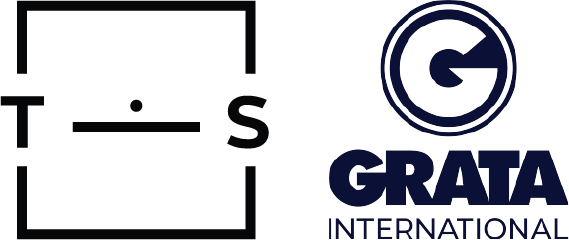In anticipation of the public debate on the Draft Law on Electronic Media we would like to single out some of the most important changes brough by the Draft, which primarily refer to media service providers.
- Providing media services via the internet will no longer be possible without acquiring permits, i.e., licenses;
In line with the current Law in Electronic Media from year 2014 (ZEM) the provision of media services via the internet (be it linear or on demand) is possible with the sole obligation of registering in the Media Service Providers Register with the Regulator, hence, without the obligation of acquiring permits, i.e., licenses. The intention of the ZEM writers was to liberalize to the greatest possible extent the requirements for the provision of media services via the internet, having in mind that in Serbia back in 2014 there were only a handful of radio and TV programmes broadcast via the internet.
However, nine years on, things have drastically changed. Online radio has utilized the non-existence of technical limitations in the best possible way to become a respectable market player using a business model based on a specialized program package, while OTT is intent on becoming the main form of distribution of audio-visual content.
In these circumstances, favouring the provision of media services via the internet compared to other forms of distribution is no longer warranted, since this leads to the creation of disloyal competition, having in mind that holding a permit includes the obligation of a permit fee, which obligation the internet radio and TV stations have not had thus far.
As a result, should there be no changes to the draft law, the provision of media services via the internet henceforth will only be possible based on an issued permit for licensed programme broadcasting (streaming), i.e., the issued permit for the provision of media services on demand (video-on-demand).
Without a license, i.e., permit the media service could still be provided by public broadcasters as well as foreign media service providers to whom the freedom of reception, i.e., retransmission applies.
2.New obligations for on demand media service providers;
It has long been considered that media services on demand, due to the greater control which the users gain through their choice of content, have a smaller effect on the society, for which reason they have, unlike the traditional media, been subjected to far more liberal rules regarding advertising, protection of minors or promotion of European works.
However, on demand media service providers such as Netflix, Amazon Prime, HBO Max or Disney Plus have in the meantime become global players taking precedence over traditional media with strategic decisions on procurement and distribution of content, with substantial effects not only on the European film industry but also on the television industry. The key to their success lies in their unique business model based on the combination of vertical content integration, transnational distribution and “big data” analytics. While unification of content production and distribution represents the main strategy of these services, transnational distribution enables them to reach a vast number of users directly. On the other hand, utilizing data on the users’ behaviour helps them to avoid costly mistakes in the order and procurement of content, all the while being able to offer their users a personalized service.
Having in mind that the audience is transferring more and more to VOD services, and that the near future will see video-on-demand becoming the dominant model for content consumers, the requests from the traditional TV industry to equalize the requirements between themselves and the services on demand are becoming ever so louder, at the very least through the elimination of quantitative limitations in advertising, and also mandatory quotas of European works which apply only to television programme broadcasting.
The draft law fails to provide for the revocation of mandatory quotas for European works for television broadcasters, and these quotas have also been introduced for on-demand services. Therefore, an on-demand media service provider is obligated to provide a share of at least 30% of European audio-visual works in their catalogue in each calendar year. The 30% share is calculated based on the number of works in the catalogue, with one season of a television series counting as one piece of work. With this, the on-demand media service provider is also obligated to provide a special highlight of European works in their catalogue accordingly through presenting those works in an attractive and accessible way. The novelty is that now the law expressly prescribes that Serbian audio-visual works must make up at least half of those works.
In addition, other notable changes to the law have also been made, hence, unlike the current Law on Electronic Media the draft law no longer provides for the different rules for linear and on-demand media regarding the protection of minors, while it now prescribes the same requirements for both linear and media service on demand for temporary limitation of the freedom of reception and retransmission of media services from foreign countries. Also, the changes to the Law on advertising will liberalize the rules of advertising which apply to traditional media, thus further equalizing the requirements for business operation of those two types of services.
3.Video content sharing platforms;
Under the influence of the AVMS directive our law places video sharing platform (youtube, instagram, facebook and the like) service providers under the umbrella of media regulation for the first time. However, unlike the linear and on-demand services, which are the holders of editorial responsibility, i.e., are responsible for the production, choice and control of the content and its organization, the specified platforms have only organizational responsibility for the programme content which they distribute, which means that they are obligated to take measures to protect their audience through the organization of content, even if this is being done automatically through an algorithm. This is only logical considering that these platforms don’t choose the programs that their users generate but rather only perform its organization in the sense of showing, marking (tagging) and recommending.
It’s worth mentioning here that the introduction of media regulation prescribed obligations for video sharing platforms does not suspend the rule on the exclusion of responsibility from the Law on Electronic Commerce, i.e., the platforms will still be able to enjoy the benefits of the “safe harbour” institute.
Therefore, as already mentioned, unlike the editorial responsibility, organizational responsibility requires that the platforms be responsible for the manner which they present their content in and not be accountable for the distribution of illegal content if they can prove that they have taken all appropriate measures to prevent the dissemination of content. It is of particular significance that the content which might harm the development of minors is not made available on video content sharing platforms, such as content enacting violence and hate or whose publication is considered as a criminal offense of public incitement to commit terrorist acts, child pornography or racial or other discrimination. Platforms will also be responsible for advertising messages which they themselves offer and edit as part of their services.
However, regardless of the differences in the type of responsibility, from the users’ perspective, the result should equal to that of media services, which in fact means that platform users should not come across content of child sexual abuse, hate speech or terrorist organization propaganda, while minors should not be enabled access to content which is harmful to their development.
The draft law fails to provide us with an answer to the question which are the appropriate measures that the platforms need to take in order to avoid responsibility for illegal content, but authorizes the Regulatory Authority for Electronic Media to specify them further having in mind the nature of the content, the harm it might produce, the characteristics and categories of the persons needed to be protected, the rights and legitimate interests of all interested parties, including the video sharing platform service providers, users generating such video content and the public interest.
We presume that the Regulator in prescribing the measures will be guided by article 28b of the AVMS directive and that these measures will consist of the platforms’ obligation of predicting the conditions, systems, mechanisms, tools, and procedures whose goal will be to prevent users from sharing illegal content, and on the other hand, encouraging users to mark (flag) or control their own exposure to problematic content.
It is important to bear in mind that our law will be applied only to those video sharing platform service providers registered in Serbia, and seeing as how none of the most popular platforms in Serbia is not in our jurisdiction, the question remains of the reach of these provisions.




